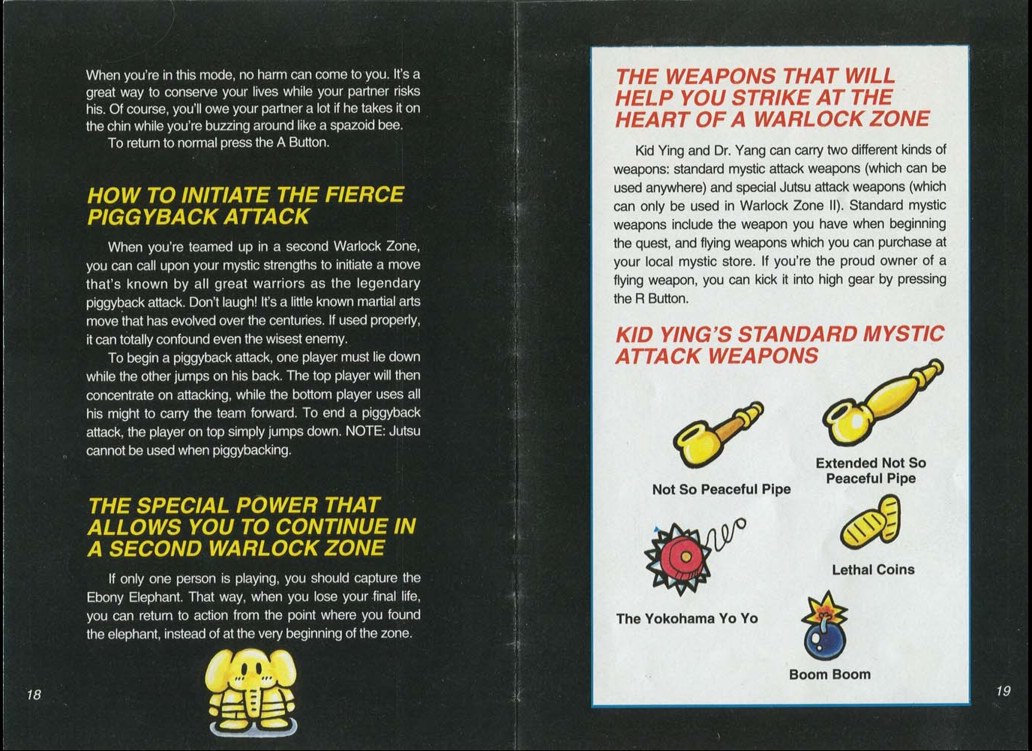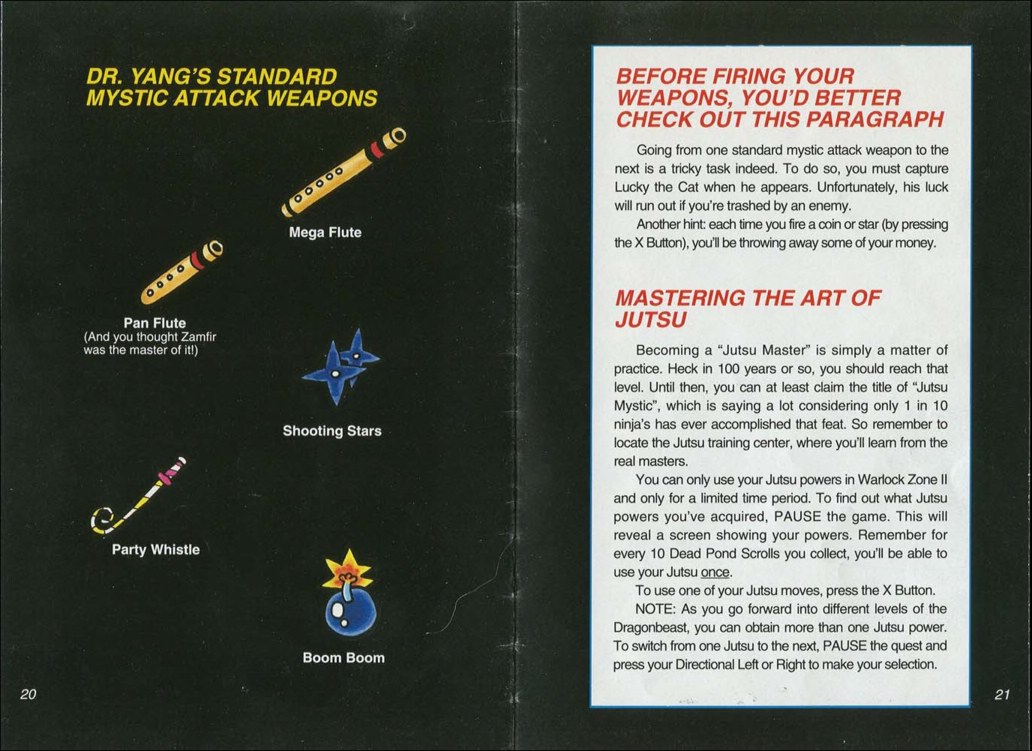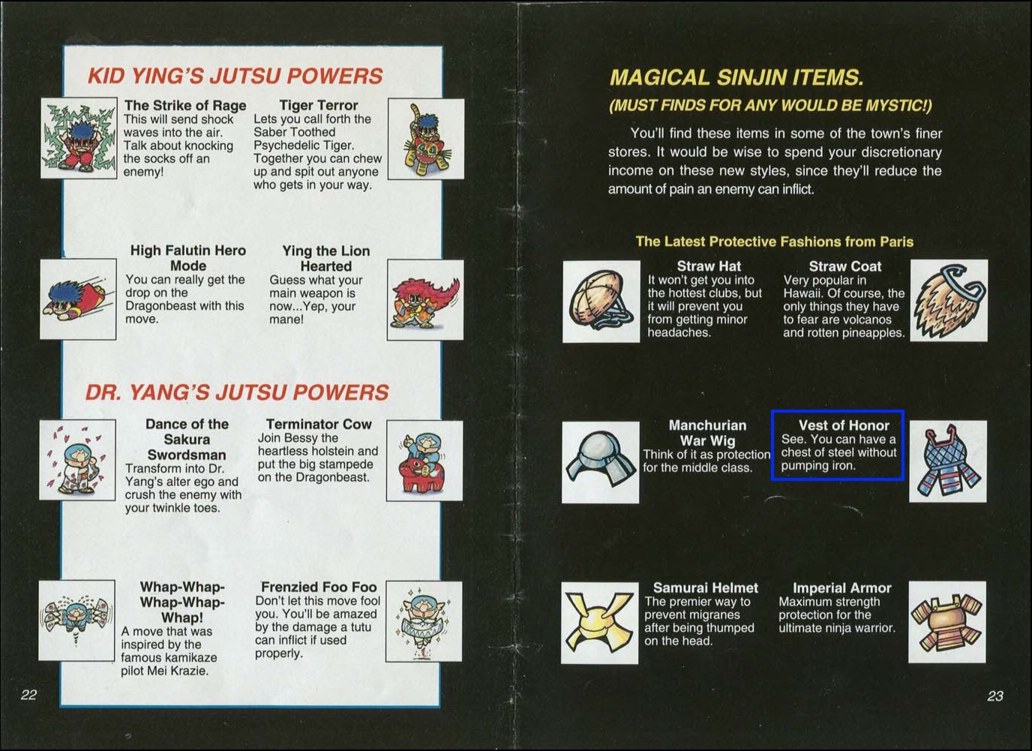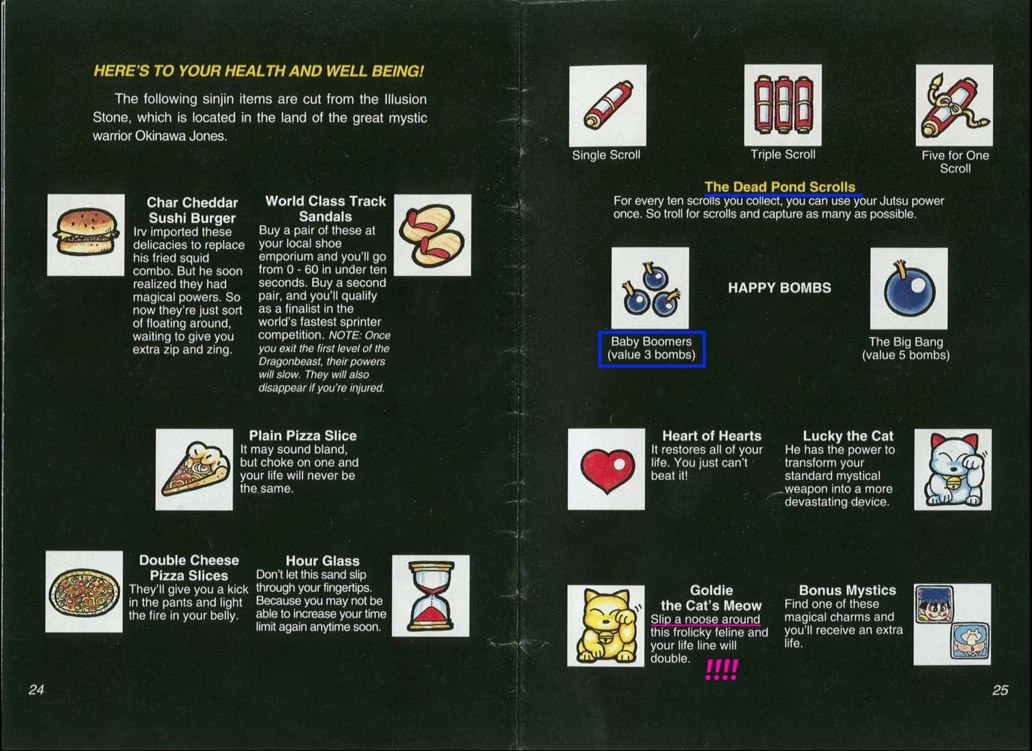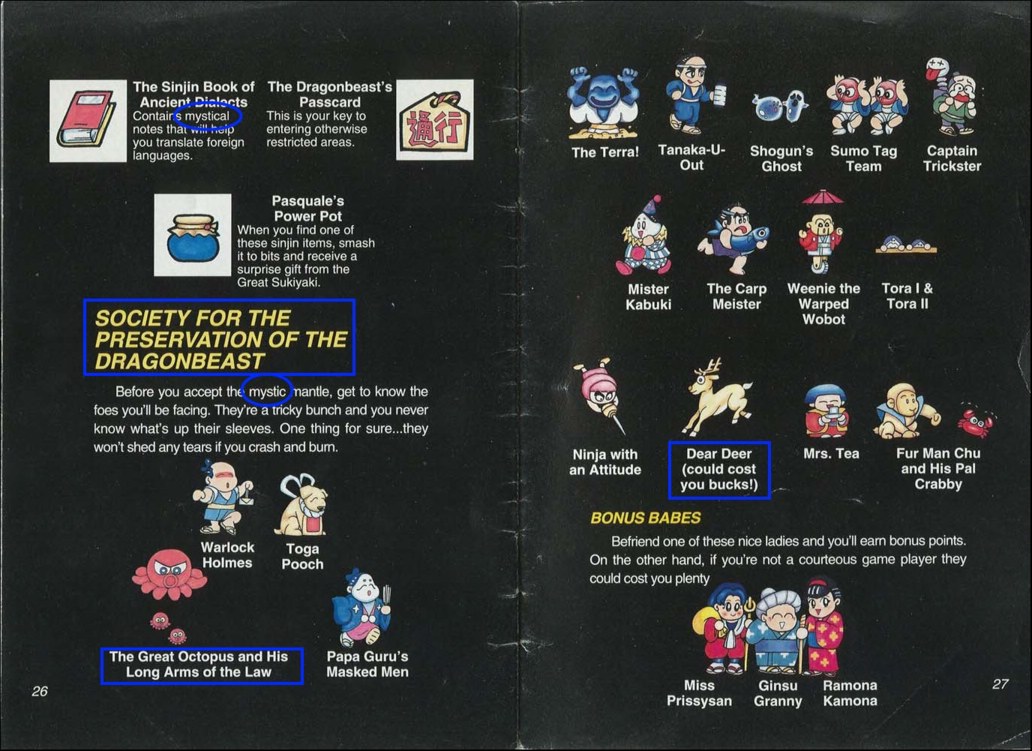Hey, let's flip through the manual! There's eyebrow-raising pieces of text here and there, plus a bunch of original artwork:(Note: the forum code allows you to click images to enlarge them)
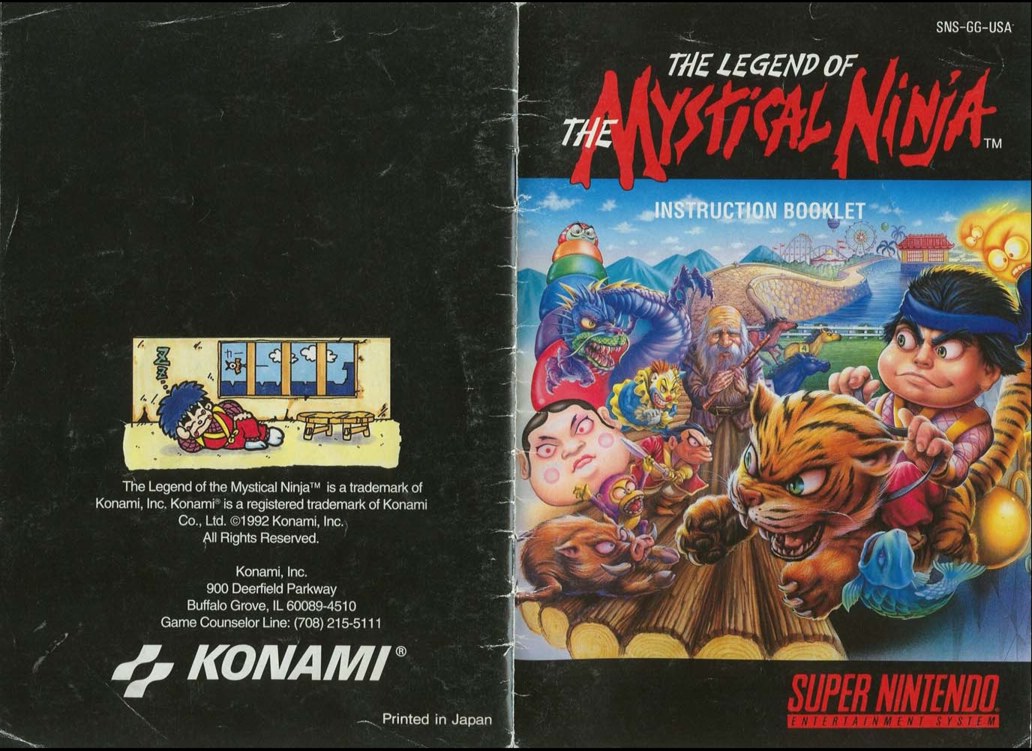
^You don't need me to point out that this is the Western box art on the right, while everything else is in the manual is Japanese art.
I probably don't dislike these sorts of Westernized cover art as most people, and if you had to use that art style then I think they didn't do a bad job with this one either. Not my preference, but eh whatever.
Mainly I think Goemon looks a bit too odd for me. The enemies are decent, especially given that the game is so flexible with its own seriousness.
The clown is the only character I wasn't immediately sure what it was meant to be, but I guess it is the NPC who wanders around the amusement park.
~~~
One thing that didn't escape my attention on the following pages is the mention of the "Dragonbeast" as the primary antagonist. This isn't mentioned in the game, so it seems made up for the Western manual like so much else. These pages go on to claim that the reason the friendly-looking townspeople attack you is because they are controlled by the "Silver Serpent". Whatever. I'm filing this under a "Mushroom citizens are inside the bricks" level of veracity.
I also don't know about the "sinjin item" terminology to refer to your collective gear or "the Great Sukiyaki" as some important character who is giving you advice. I assume these are completely made up for the manual too.
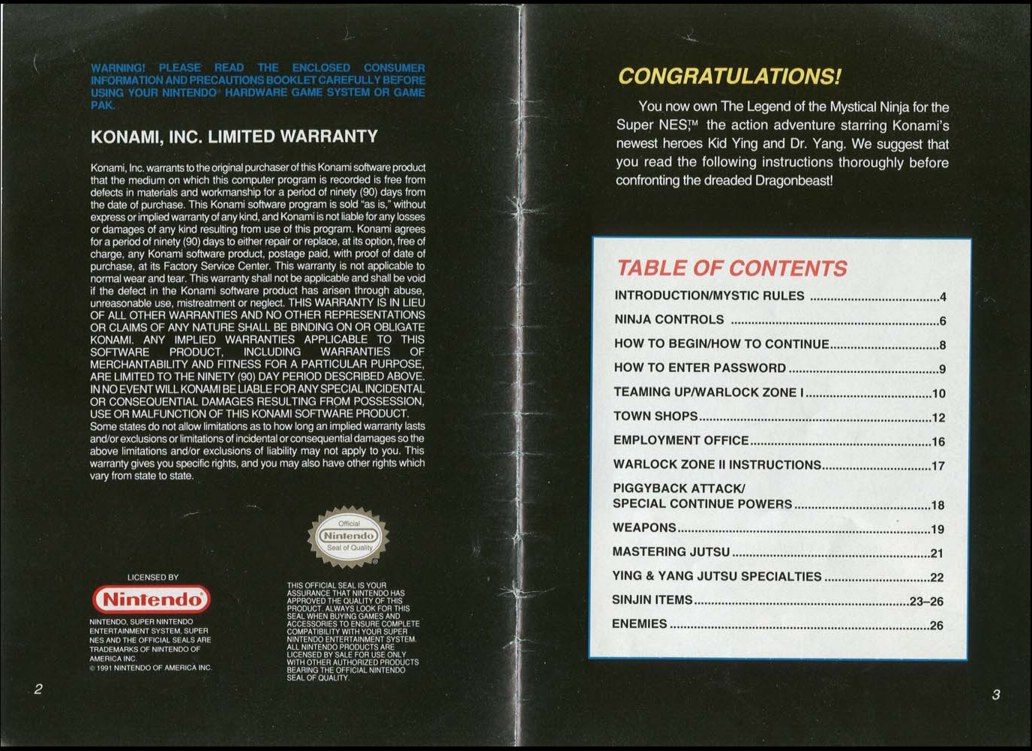
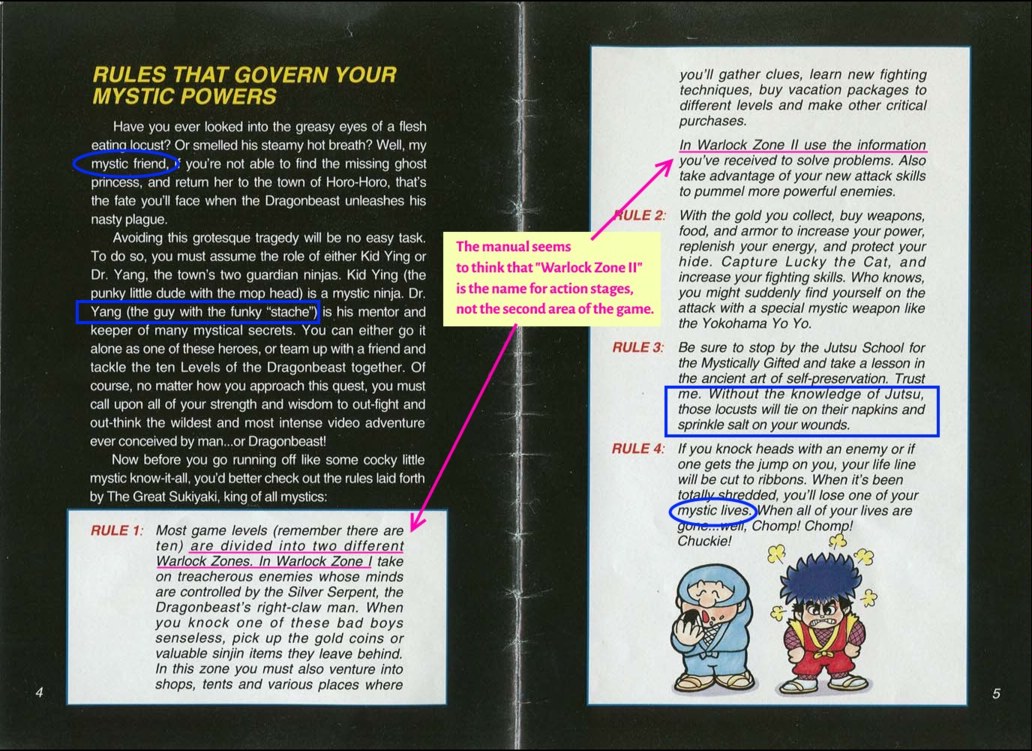
Everything special is "mystic" or "mystical". This game has a real bad case of what I call the "Link to the Past Syndrome", where one adjective is elevated above all others (magic hammer, magic mirror, magic bottle, magic cape, magic powder...)
~~~
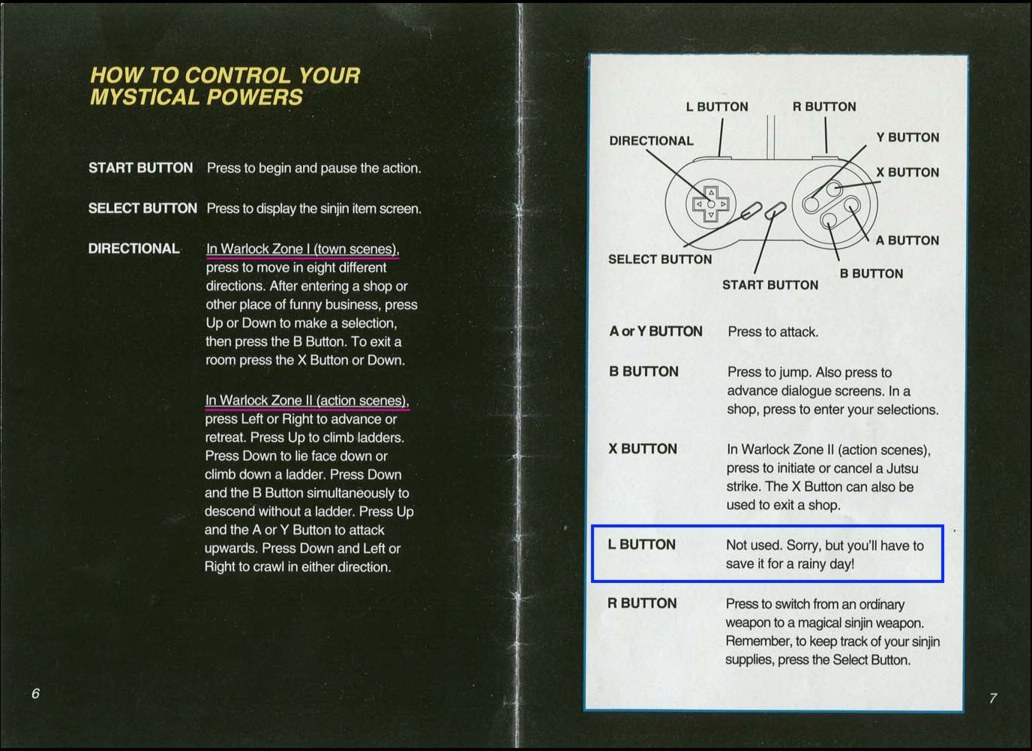
There's going to be a lot of corny text played for laughs and snark! I can't help but point out most of them here. When reading this manual, it's almost impossible not to imagine the person writing it and how they tried to make it fun to read through (and to be fair I think they were mostly successful. This was ahead of the curve for the era, perhaps?).
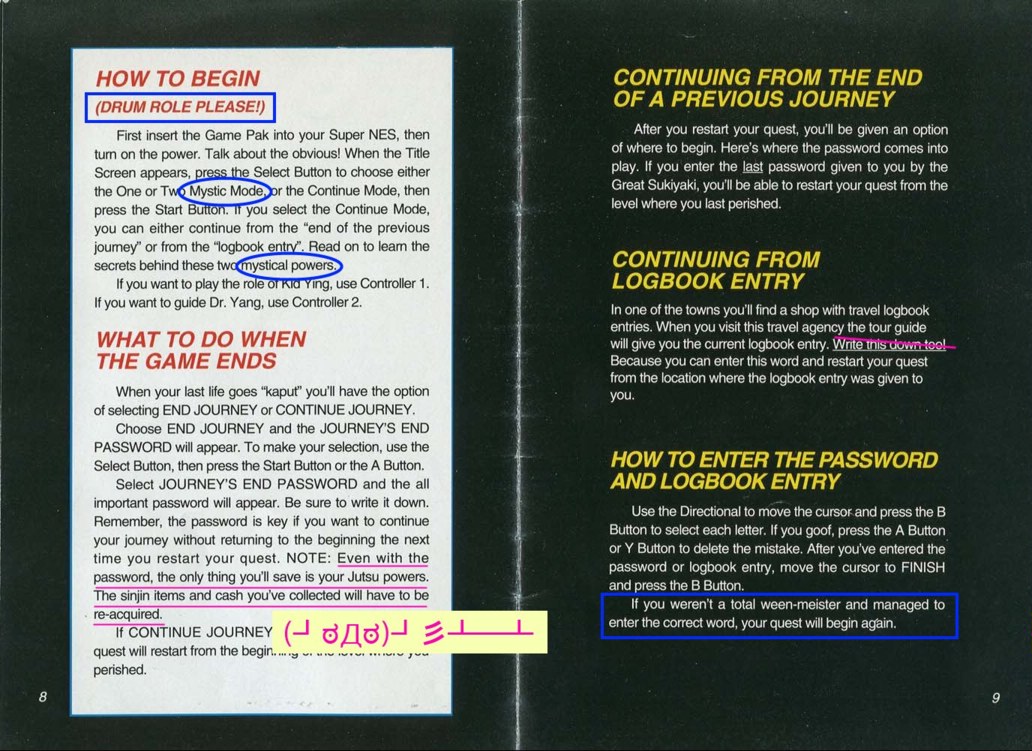
The password system in this game is a little complicated, and I don't always see it fully understood (including by myself sometimes!)
First off, there's two types of passwords: When you get a game over and choose to 'end' (quit), you get a very short password that saves
basically nothing other than the zone you were in.
The second password is the one most people know about: the very long and complicated password you can ask for by visiting Diary Places. It's several lines long, and involves capitalizations, numbers, punctuation and a few symbols like hearts:
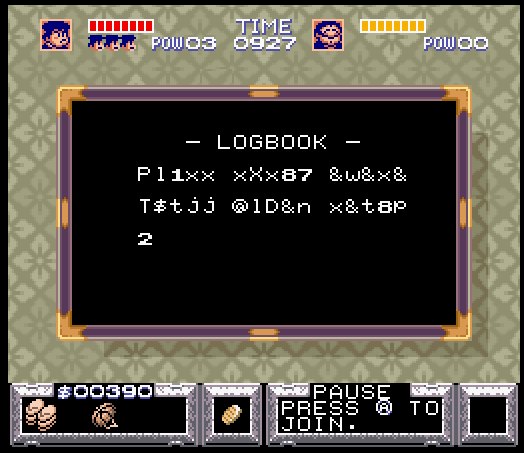
These long passwords do save everything you have (lives, gold, equipment, etc.), but honestly you don't need to write them down. Visiting the diary places also creates a save point that you can use freely, without inputting the password at all! Well, it is only "freely" usable in the sense that you need to intentionally lose all your lives to reload it, but it still works like a real save file (and restores all the lives you had before, of course).
You can use these diary saves to replay minigames, play around with Judo powers, or simply restart if you screw up badly and wasted a lot of your equipment/gold/lives. That can be very important in the later stages!
There is no save battery though, so theoretically the password itself is useful if you can't finish in one sitting (and don't have save states

). This diary-based save file might delete itself when you enter a new zone as well, I'm not sure about that.
~~~
The manual now goes on to describe all the mini-games and specialty houses. If it wasn't obvious before, it's clear now that the writer was inventing their own names for everything:
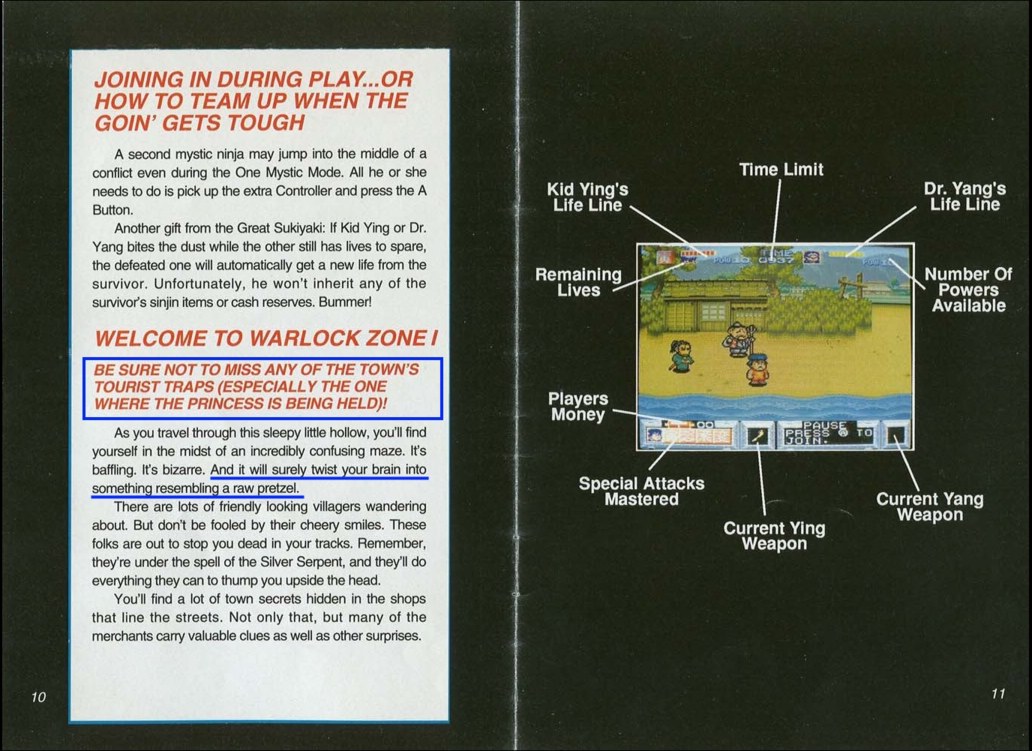
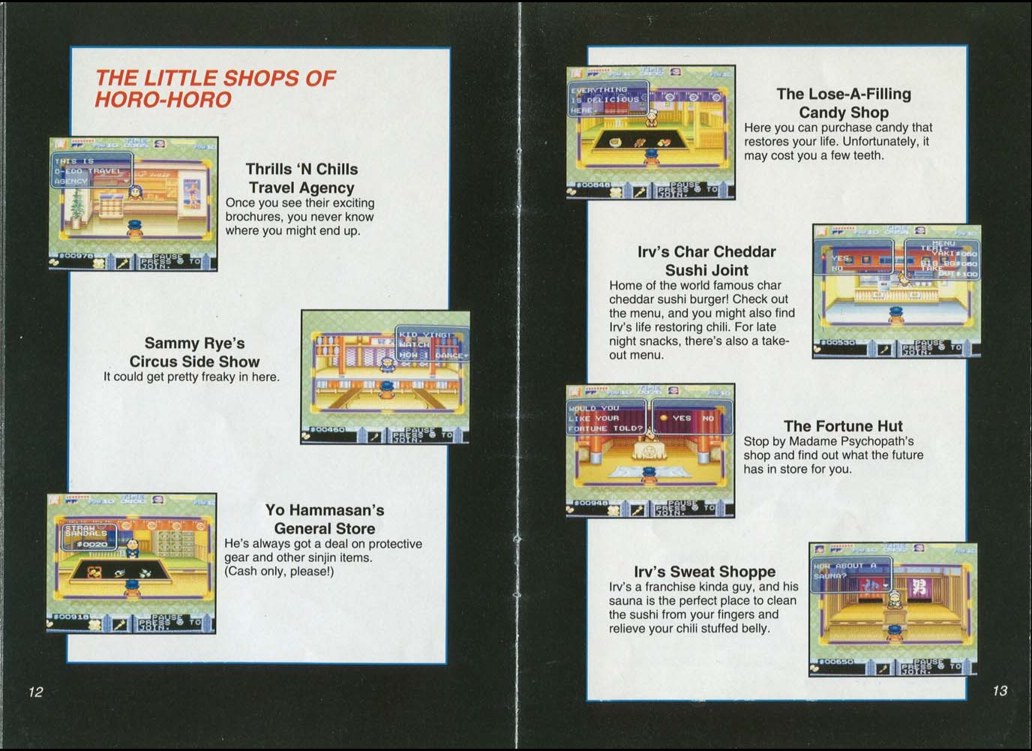
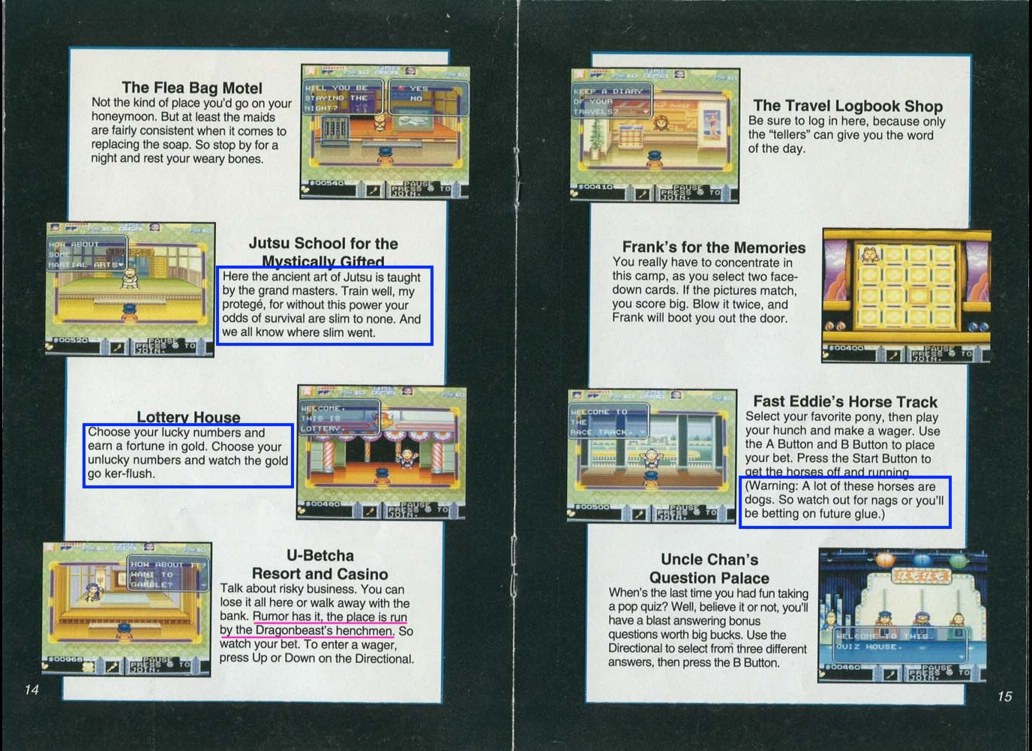
I don't care for the dice game (called a 'Casino' above), so this line seemed oddly fitting to me.
~~~
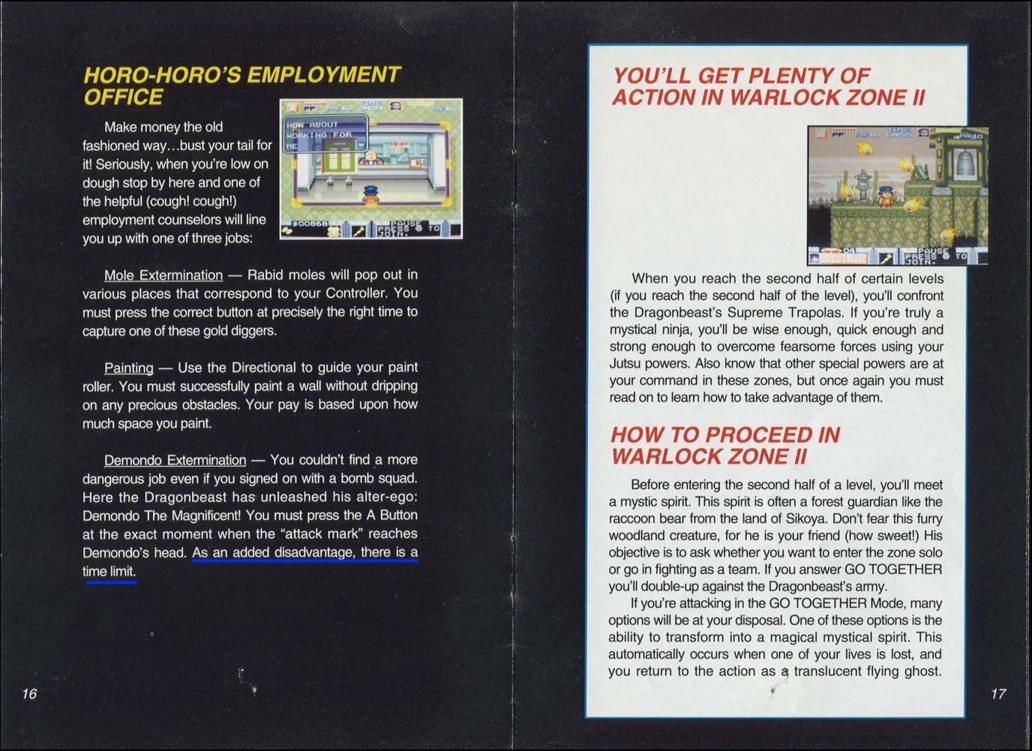
The goblin minigame ("Demondo", according to the manual) also ranks very low on the ordering of best minigames. I wonder if they are intentionally lampshading this fact or not.
Curiously, they refer to the game shop as the "employment office". Am I wrong in thinking that this screenshot is from a different version of the game? I don't think it's ever called that.
~~~
Finally we get to a whole bunch of artwork and lists of items/powerups (yay!). This was always my favorite part of SNES manuals, and I don't think I'm alone.
Side note: I'm awfully suspicious at these bomb and scroll items they list. I feel like there aren't 3 types of scroll pickups and there isn't a bomb pickup that grants 3 bombs, but whatever.
